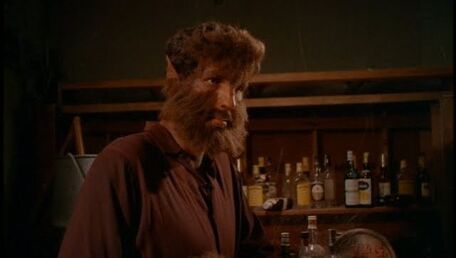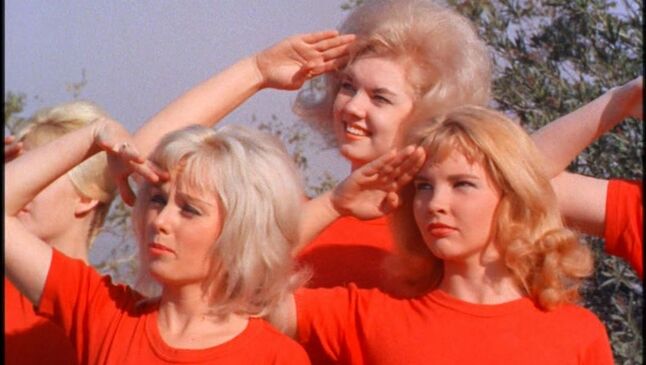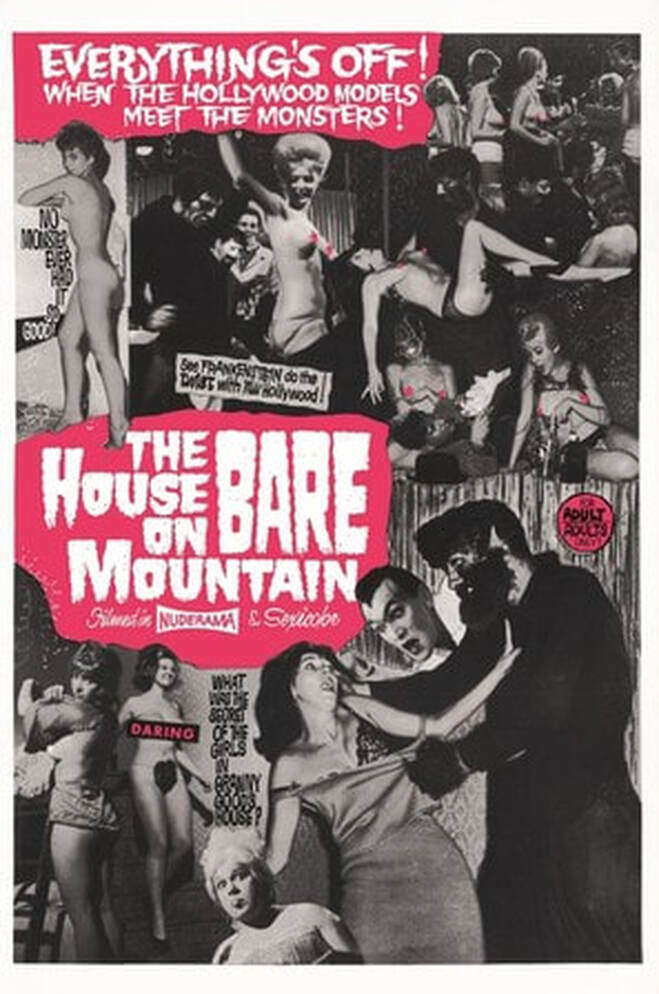[Tearing Through Werewolf Cinema] 'House on Bare Mountain' Gave Us the First Werewolf Porno10/14/2020  Welcome to a weekly series in which Doris V. Sutherland takes readers on a trip through the history of werewolf cinema... ...House on Bare Mountain (1962) introduces us to an all-girls’ school run by Granny Good. Not one to enforce modesty, the good Granny allows her pupils to freely frolic in various stages of undress—even when the parents of her latest student, Prudence, are visiting. But all is not as it seems. Prudence is actually a detective sent to investigate an illicit alcohol operation being run by Granny Good in the school basement—and the case gets even stranger when Granny’s partner in crime turns out to be a werewolf. When the credits begin by hailing “Lovable Bob Cresse as Granny Good” before introducing us to the likes of Doris Dracula and Hoover Vacuum, we know we’re not exactly headed for the Criterion Collection. Yet House on Bare Mountain, directed by Wes Bishop and Lee Frost from a screenplay by Denver Scott, does have a small place in genre history as the first ever werewolf porno. Analysing the plot seems redundant, as what little narrative the film has exists simply as a means to string together long scenes of topless young women. The school setting allows a number of variations, some of which are mildly witty—a life-drawing class in which everyone but the model is naked—but the filmmakers soon run out of ideas and simply send the actresses back to the showers for still more lingering shots of soap-sudsing. Even the climactic fancy dress party turns out to be a missed opportunity, feeling like nothing so much as the rave scene from The Matrix Reloaded restaged in slow-motion on a five-dollar budget. There’s humour, as well, although none of it is particularly memorable. Much of it is conveyed through Granny Good’s narration as she introduces us to the various naked pupils (“The poor child came from a broken home: her house slid off a cliff and cracked right in two”). Once the werewolf is loose, we get slapstick fare somewhere below the Three Stooges’ tangles with Lupo the Wolf Man in terms of sophistication. The attempts at comedy are occasionally bewildering. One scene has a girl walk through a door, go downstairs, speak on a telephone (with cartoon sound effects replacing dialogue) before heading back upstairs again—after which the sequence is repeated multiple times with different girls. Is the audience meant to find this thigh-slappingly funny? Or did someone involved with production have a fetish for the sight of naked women walking up and down a flight of stairs? Ah, the inscrutable world of cinema. On the whole, House on Bare Mountain is a bit of an oddball entry in the history of werewolf films, yet in some ways it indicates the direction in which the subgenre was heading. Two of the most prominent characters in the fancy-dress party sequences are a Dracula and a Frankenstein; although they never impact the plot, they’re listed in the credits alongside the Wolfman, indicating that House on Bare Mountain was conceived as a team-up between parody versions of famous monsters. As the decade progressed comedy ensembles of this type would provide stable employment for celluloid werewolves, with loveable lycanthropes from Eddie in The Munsters (1964-6) to Wolfie in the animated Mad Monster Party (1968) rubbing shoulders with similarly domesticated vampires and Frankensteins. This premise had, of course, been used by Abbott and Costello Meet Frankenstein back in 1948, but it had long been dormant before coming into its own during the sixties. House on Bare Mountain deserves credit for recognising the zeitgeist early on—even if the results probably aren’t the sort of thing you’d show to kids at a Halloween party. By Doris V. Sutherland Enjoy Doris' writing? Leave her a tip here through Ko-fi!
0 Comments
Leave a Reply. |
Archives
March 2023
|


 RSS Feed
RSS Feed